30+ Free Chore Chart Templates (Kids, Adult & Family)
Chore charts are more than just colorful charts on the fridge—they are powerful tools for organization, productivity, and building a sense of responsibility. Whether you’re a parent looking to instill good habits in your children or a teacher seeking to create a structured learning environment, chore charts can be your secret weapon. In this blog post, we’ll explore the various types of chore chart templates and provide tips for effectively using them. Get ready to streamline your daily routines, foster collaboration, and achieve a harmonious household.
Table of Contents
Download Printable Chore Chart Templates
Chore Chart Template for Kids

66 KB 1 file(s) 18 Downloads
Adult Chore Chart Template
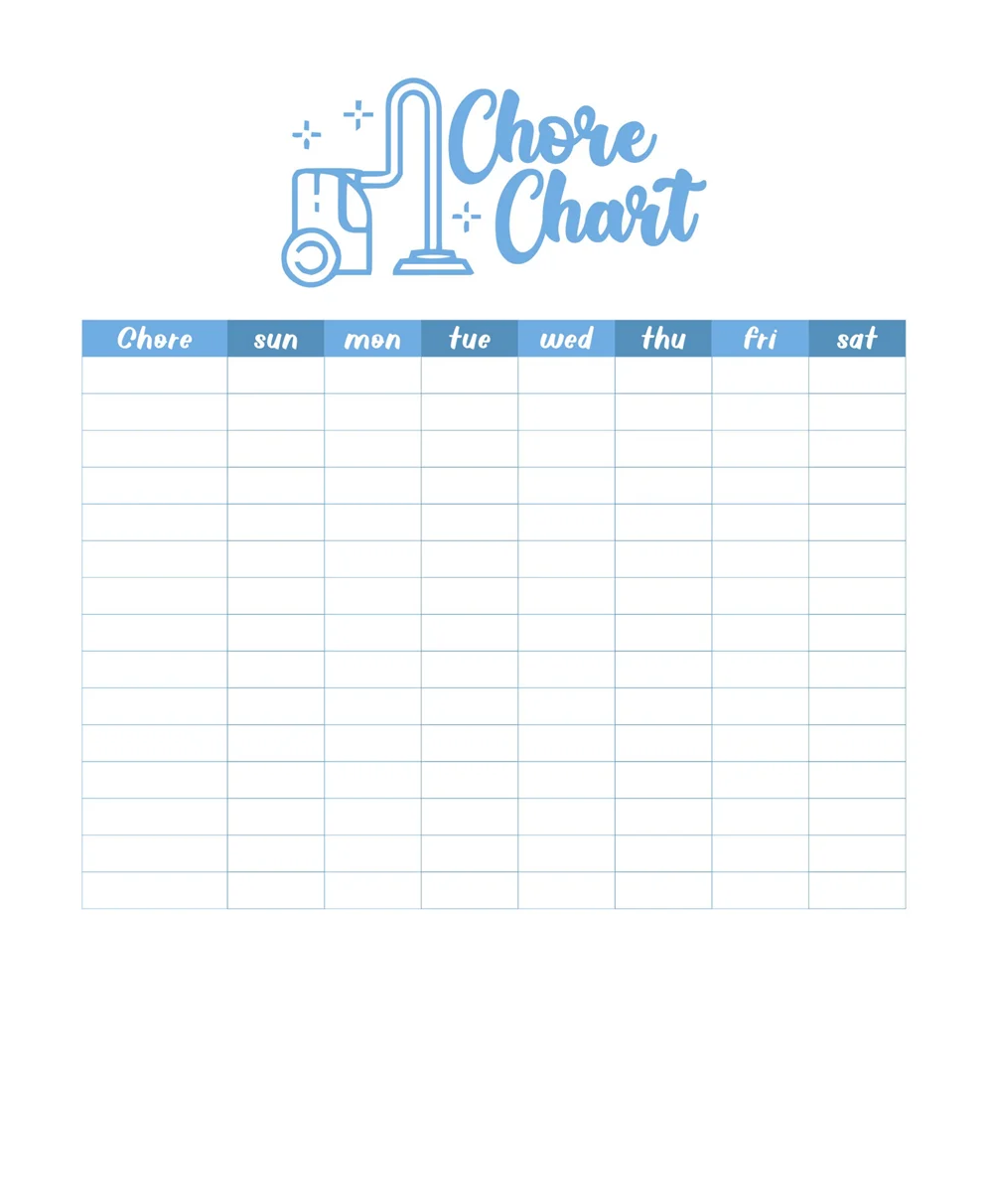
386 KB 1 file(s) 13 Downloads
Family Chore Chart Template
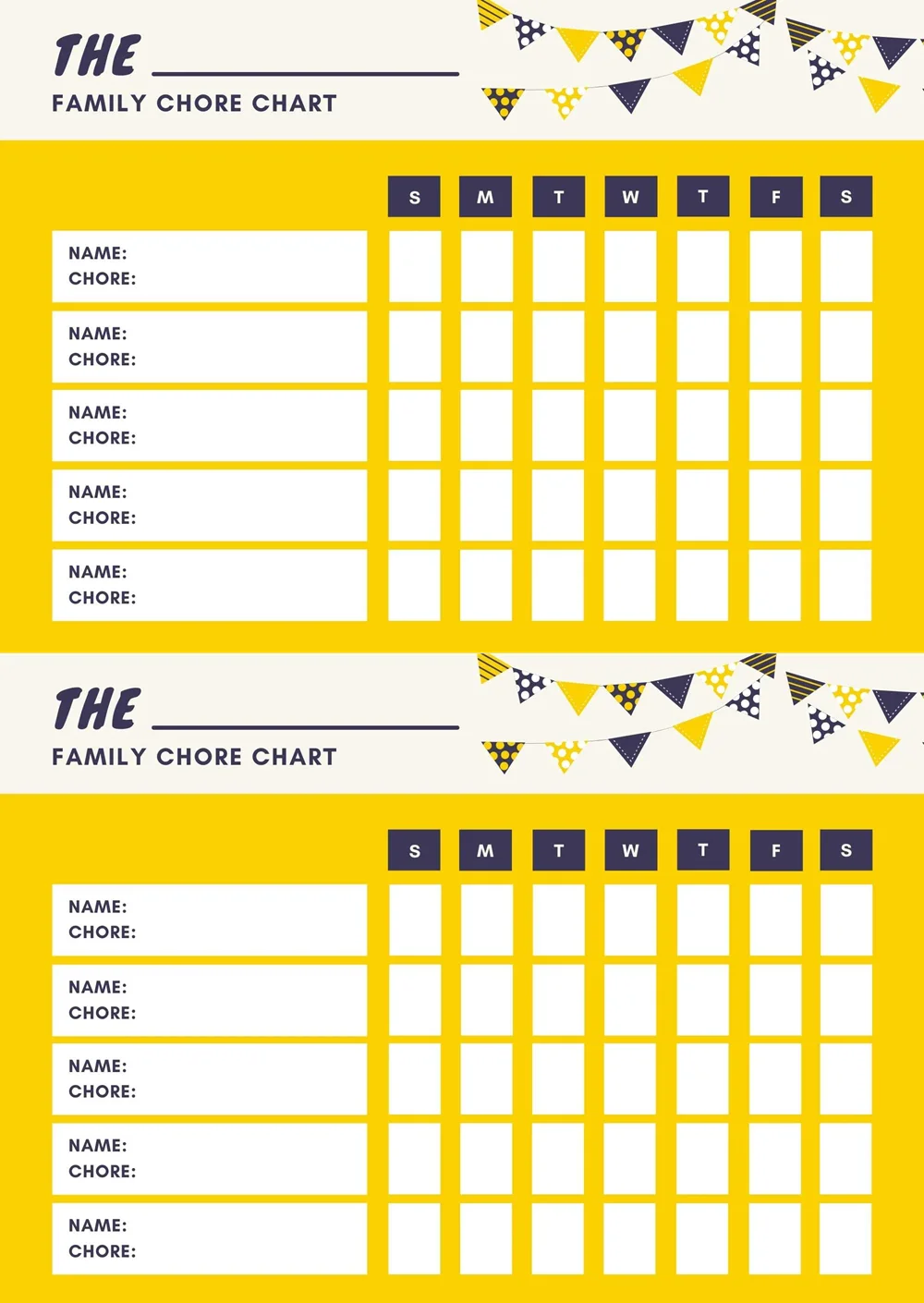
709 KB 1 file(s) 14 Downloads
Sample Chore Chart Template
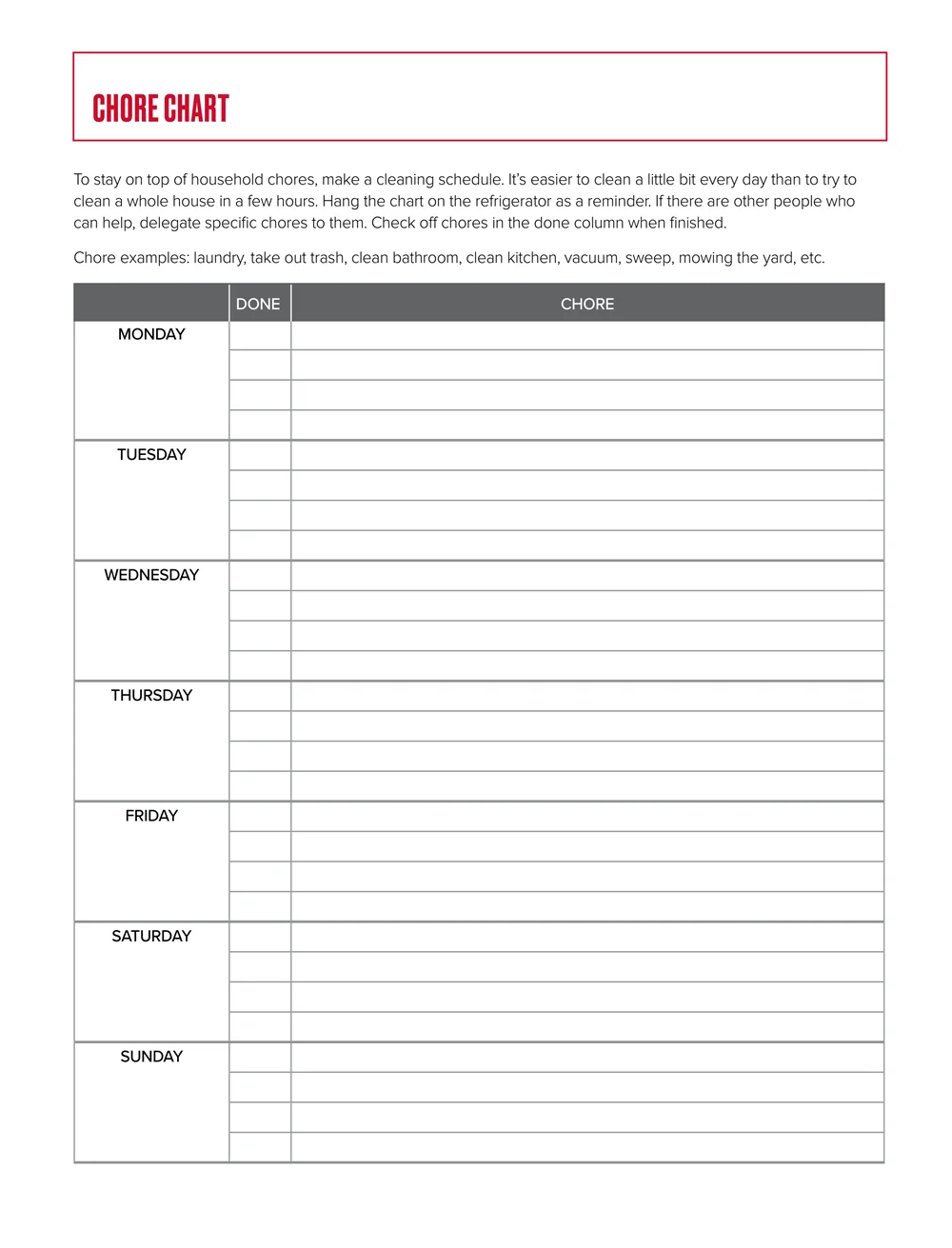
35 KB 1 file(s) 16 Downloads
I. Types of Chore Chart Templates
Daily Chore Chart Template
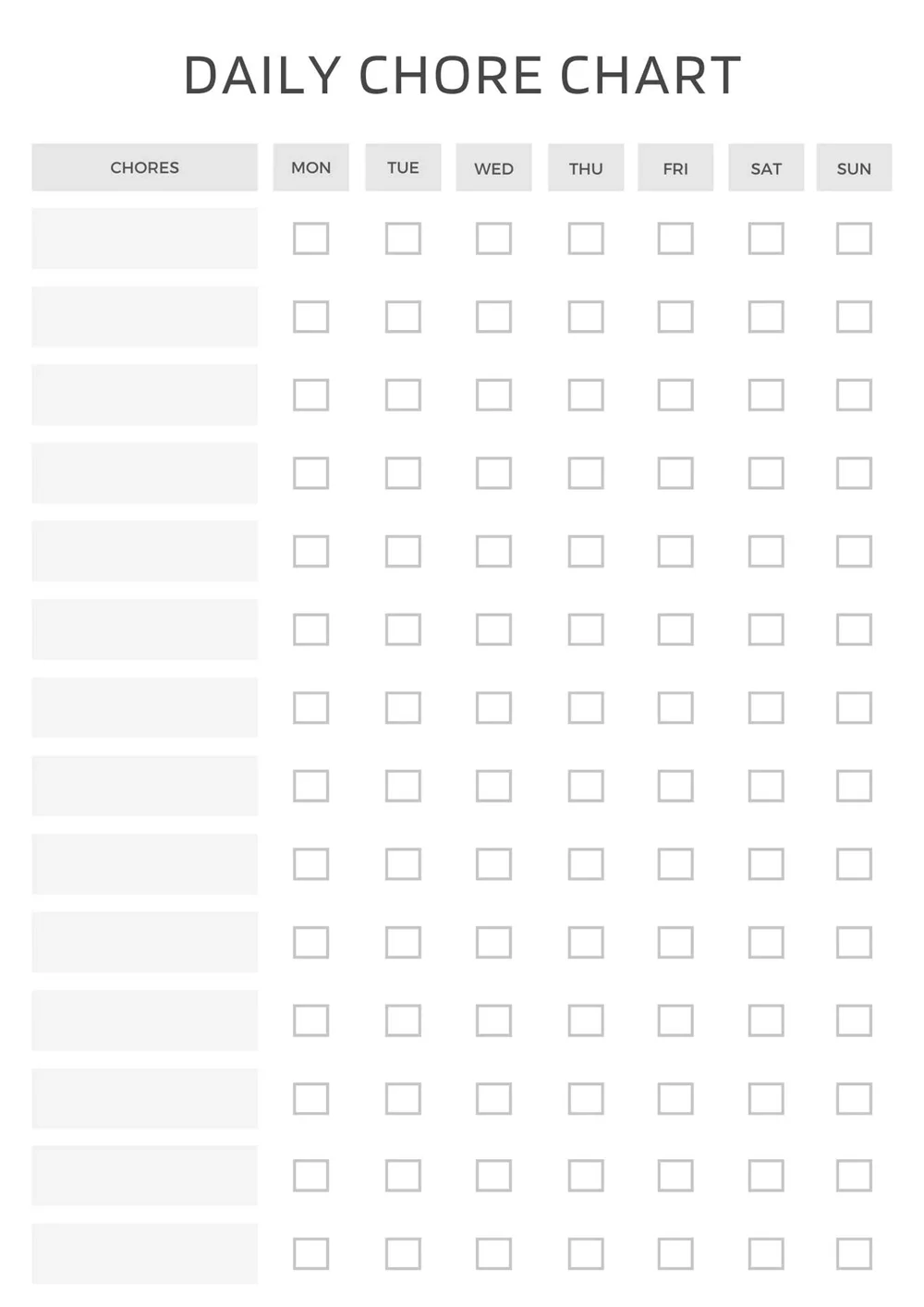
89 KB 1 file(s) 17 Downloads
Weekly Chore Chart Template

734 KB 1 file(s) 13 Downloads
Monthly Chore Chart Template
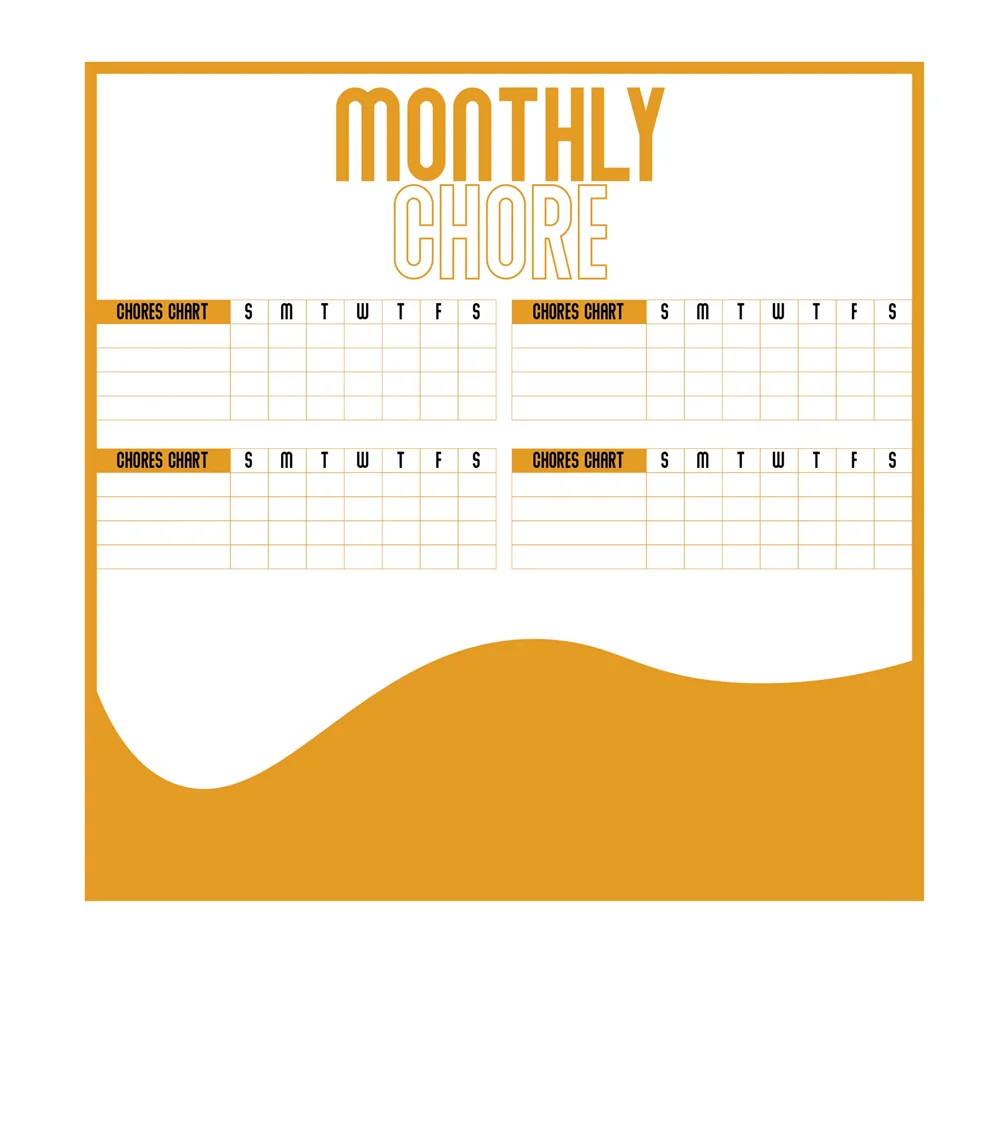
482 KB 1 file(s) 11 Downloads
Children thrive when given age-appropriate responsibilities. Kid’s chore chart templates not only help them understand the value of contributing to the household but also teach them vital life skills early on.
1. Age-appropriate Chores:
Assigning age-appropriate chores is crucial for fostering a sense of responsibility and independence in children. Tailoring tasks to their developmental stage ensures that they can contribute meaningfully while building valuable life skills. Here are some examples of age-appropriate chores:
Preschoolers (Ages 3-5):
- Putting toys away in designated bins.
- Wiping spills with a damp cloth.
- Matching socks during laundry time.
Elementary School (Ages 6-10):
- Making their bed in the morning.
- Setting the table for meals.
- Watering plants or small garden tasks.
Preteens (Ages 11-13):
- Folding and putting away laundry.
- Basic meal preparation under supervision.
- Taking care of a pet’s feeding routine.
Teenagers (Ages 14-17):
- Vacuuming or sweeping designated areas.
- Managing personal laundry from start to finish.
- Grocery shopping for specified items.
2. Fun and Engaging Designs:
Creating chore chart templates with vibrant and engaging designs can turn mundane tasks into exciting activities. The visual appeal of the chart can capture attention and make the entire process more enjoyable for both kids and adults. Here are some design ideas:
- Themed Charts: Designing charts based on popular themes like superheroes, space, or animals can make chores visually interesting.
- Color-coded Tasks: Assigning a unique color to each family member’s tasks helps in quick identification and adds a visually pleasing aspect to the chart.
- Interactive Elements: Incorporating spaces for stickers, emojis, or personal notes allows for customization and adds a sense of personalization.
- Progress Trackers: Including a visual progress tracker or checklist can instill a sense of accomplishment as tasks get completed.
3. Reward Systems for Motivation:
Implementing a reward system is a powerful motivator for both children and adults. It reinforces positive behavior and creates a sense of achievement. Here are some ideas for effective reward systems:
- Sticker Charts: For each completed task, individuals can earn a sticker. A certain number of stickers can then be exchanged for a reward.
- Points System: Assigning points to each task and accumulating them over time can lead to earning rewards or privileges.
- Weekly/Monthly Goals: Setting achievable goals for completing chores within a specified time frame and rewarding successful completion.
- Special Treats or Activities: Rewards can include treats like ice cream, a movie night, or a special outing as a family.
Remember, the key to a successful reward system is consistency and ensuring that the rewards align with the preferences and interests of those involved.
B. Adult Chore Chart Templates
No one is too old to benefit from a chore chart. Adult chore chart templates can help individuals manage household responsibilities, and work-related tasks, and improve overall time management and productivity.
1. Household Responsibilities:
Household chore charts aren’t just for kids; adults can benefit from organized task management too. Assigning specific household responsibilities helps maintain a clean and well-functioning home. Here’s how you can organize responsibilities:
- Cleaning Tasks: Divide household cleaning chores such as vacuuming, dusting, and cleaning bathrooms among family members or housemates. Rotating these tasks ensures a fair distribution of responsibilities.
- Meal Planning and Cooking: Create a schedule for planning meals, grocery shopping, and cooking. This not only eases the burden on one person but also ensures a variety of meals throughout the week.
- Home Maintenance: Include tasks related to home maintenance, such as checking and changing air filters, watering plants, or handling minor repairs. This prevents larger issues from developing over time.
2. Work-related Tasks:
For those working from home or managing a home-based business, a chore chart tailored to work-related tasks can enhance efficiency and create a more balanced work-life routine. Consider the following:
- Daily Work Goals: Set specific, achievable work goals for each day. This could include tasks like responding to emails, completing projects, or attending virtual meetings.
- Breaks and Self-Care: Integrate breaks into the schedule to prevent burnout. This could involve short breaks for stretching or longer breaks for a healthy lunch.
- Collaborative Tasks: If applicable, involve family members or housemates in tasks that support your work, such as handling phone calls, managing mail, or providing support during busy periods.
3. Time Management and Productivity:
Efficient time management is the cornerstone of productivity. A chore chart designed to enhance time management skills can make a significant impact on personal and professional success. Consider the following elements:
- Prioritization: List tasks in order of priority, focusing on high-priority and time-sensitive activities. This ensures that crucial tasks are addressed first.
- Time Blocks: Allocate specific time blocks for different types of tasks. This method, known as time blocking, helps in concentrating on one task at a time and improves overall productivity.
- Reflection and Adjustment: Regularly review the effectiveness of your time management strategies. Adjust the chore chart as needed to accommodate changes in workload or personal priorities.
C. Family Chore Chart Templates
A family that works together thrives together. Family chore chart templates promote collaboration, teamwork, and shared responsibilities.
1. Shared Responsibilities:
Embracing shared responsibilities within a family not only lightens the workload for each member but also fosters a sense of unity and cooperation. A chore chart designed for shared responsibilities encourages everyone to contribute actively to the household. Here’s how you can structure it:
- Rotate Tasks: Assign a variety of tasks to each family member and rotate them regularly. This prevents anyone from feeling burdened with the same responsibilities continuously.
- Open Communication: Encourage open communication about preferences and strengths. Some members may prefer certain tasks over others, and discussing these preferences helps in creating a fair and efficient chore distribution.
- Team Effort: Emphasize the idea that completing tasks is a team effort. Acknowledge and appreciate each other’s contributions to create a supportive and collaborative environment.
2. Collaboration and Teamwork:
A chore chart focused on collaboration and teamwork extends beyond shared responsibilities, emphasizing the importance of working together efficiently. This is especially beneficial for families, roommates, or any group sharing a living space. Consider these elements:
- Group Tasks: Identify tasks that require joint effort, such as cleaning common areas or organizing shared spaces. Allocate time for these group tasks to encourage collaboration.
- Regular Meetings: Schedule regular family or housemate meetings to discuss the chore chart, share feedback, and address any concerns. This ensures that everyone feels heard and involved in the decision-making process.
- Recognize Contributions: Celebrate achievements as a group. Whether it’s completing a challenging task or meeting a set goal, recognizing and celebrating collective efforts boosts morale and encourages continued teamwork.
3. Creating a Harmonious Household:
The ultimate goal of a chore chart is to create a harmonious household where everyone feels valued and the living environment is peaceful. Consider these elements when designing a chore chart for a harmonious household:
- Balanced Distribution: Ensure that responsibilities are distributed fairly to avoid resentment. A balanced chore chart contributes to a more harmonious living arrangement.
- Flexibility: Incorporate flexibility into the chore chart to accommodate changes in schedules or unexpected events. Flexibility promotes understanding and reduces stress.
- Shared Goals: Establish common goals for the household, such as maintaining cleanliness, fostering a positive atmosphere, and supporting each other’s well-being. Aligning individual efforts with shared goals strengthens the sense of unity.
II. Design and Customization
The visual appeal and personalization of chore charts can make them even more effective in engaging and motivating individuals to complete their tasks.
A. Visual Appeal
- Colors and Graphics: Incorporate vibrant colors, playful images, or themed designs to make the chore chart visually appealing and enticing.
- Themes for Different Preferences: Tailor the design to match the interests and preferences of the individuals using the chore chart.
B. Customization Options
- Editable Fields for Personalization: Allow individuals to customize their chore charts by adding their names, choosing specific tasks, or modifying the layout.
- Adding Names and Specific Tasks: Personalize each chart to reflect the unique responsibilities of each family member or individual.
III. Weekly and Monthly Chore Chart Templates
To effectively manage tasks and goals, consider using weekly and monthly chore chart templates to provide structure and track progress.
A. Weekly Chore Chart
- Daily Tasks and Rotations: Assign specific tasks for each day of the week, promoting consistency and establishing routines.
- Weekly Goals and Rewards: Set achievable goals for each week and reward individuals upon successful completion.
B. Monthly Chore Chart
- Monthly Focus Areas: Highlight specific areas or tasks that require attention and dedicate the month to improving them.
- Long-term Goals and Tracking Progress: Incorporate long-term goals and track progress over the month, celebrating milestones and achievements.
IV. Tips for Effectively Using Chore Charts
To make the most of chore charts and ensure their effectiveness, consider the following tips:
A. Consistency and Routine: Stick to the chore chart consistently to establish routines and foster responsibility.
B. Celebrating Achievements: Recognize and celebrate the completion of tasks or milestones to reinforce positive behavior.
C. Periodic Review and Adjustments: Regularly review and update the chore chart to accommodate changing responsibilities or priorities.
V. Downloading and Using the Templates
Accessing and utilizing chore chart templates is easier than ever. Follow these steps to make the most of them:
A. How to Access the Templates: Visit our website [Link] to access and download a variety of chore chart templates.
B. Compatibility and File Formats: Our templates are available in various file formats, ensuring compatibility with different devices and software.
C. Printing and Digital Usage: Choose to print the templates or use them digitally, based on your preferences and convenience.
Conclusion
Chore charts are powerful tools for organizing tasks, promoting productivity, and instilling a sense of responsibility. By utilizing the right chore chart templates, tailored to different audiences and needs, you can create a positive and efficient environment for yourself, your children, or your students. Embrace the benefits of chore charts, establish clear routines, and celebrate the achievements along the way. Get started today and witness the transformative power of chore charts in your daily life.
How useful was this post?
Click on a star to rate it!
Average rating / 5. Vote count:
No votes so far! Be the first to rate this post.








